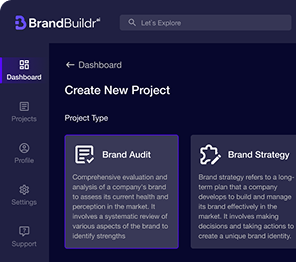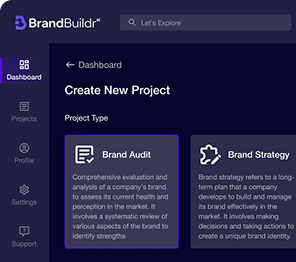In today’s fast-paced digital landscape, businesses are under constant pressure to deliver software updates and new features rapidly while maintaining high-quality standards. Traditional software development practices, which often separate development and operations teams, can be slow, inefficient, and prone to errors. To address these challenges, many organizations are adopting DevOps—a set of practices that combines software development (Dev) and IT operations (Ops) to accelerate the software development lifecycle (SDLC). In this article, we will explore how DevOps can streamline and speed up your SDLC, leading to faster delivery, improved quality, and increased customer satisfaction.

Understanding DevOps: A Collaborative Culture
DevOps is more than just a set of tools or practices; it is a cultural shift that emphasizes collaboration, communication, and integration between development and operations teams. Traditionally, these teams have operated in silos, with developers focusing on writing code and operations teams handling deployment and infrastructure management. This separation often leads to bottlenecks, miscommunication, and delays in the software development process.
DevOps aims to break down these silos by fostering a collaborative environment where development, operations, and other stakeholders work together throughout the entire SDLC. This collaboration is supported by automation, continuous integration, continuous delivery (CI/CD), and monitoring, all of which contribute to a more efficient and streamlined development process.
Key Benefits of DevOps in Accelerating the SDLC
DevOps offers several key benefits that can significantly accelerate the software development lifecycle. By adopting DevOps practices, organizations can reduce the time it takes to deliver software from months or weeks to days or even hours. Here are some of the ways DevOps can speed up your SDLC:

1. Continuous Integration and Continuous Delivery (CI/CD)
Continuous integration and continuous delivery (CI/CD) are at the heart of DevOps and play a crucial role in accelerating the SDLC. CI/CD pipelines automate the process of integrating code changes, testing them, and deploying them to production. This automation reduces manual intervention, minimizes errors, and ensures that new features and updates are delivered to users quickly and reliably.
Continuous Integration (CI)
Continuous integration involves automatically integrating code changes from multiple developers into a shared repository several times a day. Each integration is automatically tested to detect errors early in the development process. This approach allows developers to identify and fix issues quickly, preventing them from escalating into larger problems later in the SDLC.
Continuous Delivery (CD)
Continuous delivery extends the concept of CI by automating the deployment of code changes to production environments. Once code changes pass automated tests, they are automatically deployed to staging or production environments, reducing the time and effort required for manual deployments. CD ensures that software is always in a releasable state, allowing organizations to deliver updates to users more frequently and with greater confidence.
2. Automation of Repetitive Tasks
One of the primary goals of DevOps is to automate as many repetitive tasks as possible. Automation not only speeds up the SDLC but also reduces the risk of human error, leading to more reliable and consistent outcomes. Key areas of automation in DevOps include:
- Build Automation: Automating the process of compiling code, running tests, and generating artifacts ensures that builds are consistent and repeatable.
- Test Automation: Automated testing allows for rapid feedback on the quality of code changes, enabling developers to identify and fix issues early.
- Deployment Automation: Automating the deployment process reduces the time it takes to push changes to production and ensures that deployments are consistent across different environments.
- Infrastructure as Code (IaC): IaC allows infrastructure to be managed and provisioned through code, enabling automated and consistent infrastructure management.
By automating these tasks, DevOps teams can focus on more strategic activities, such as improving code quality, optimizing performance, and enhancing the user experience.
3. Improved Collaboration and Communication
DevOps promotes a culture of collaboration and communication between development, operations, and other stakeholders, such as QA and security teams. This collaborative approach helps to break down silos, align goals, and ensure that everyone is working towards the same objectives. Improved communication leads to faster decision-making, quicker problem resolution, and a more agile development process.
In a DevOps environment, development and operations teams work together from the beginning of the SDLC, sharing knowledge and expertise. This collaboration allows for better planning, more accurate estimates, and a deeper understanding of the challenges and constraints each team faces. As a result, teams can work more efficiently and avoid the delays that often occur when handoffs between teams are required.
4. Faster Feedback Loops
One of the key principles of DevOps is the use of fast feedback loops to identify and address issues as early as possible. Continuous integration, automated testing, and monitoring provide immediate feedback on the impact of code changes, allowing developers to make adjustments quickly and avoid costly rework later in the SDLC.
Fast feedback loops also enable organizations to respond more quickly to user feedback and market changes. By continuously monitoring the performance and user experience of their software, DevOps teams can quickly identify areas for improvement and implement changes in a timely manner. This agility allows organizations to stay competitive in a rapidly changing market and meet the evolving needs of their users.
5. Scalability and Flexibility
DevOps practices enable organizations to scale their software development processes more effectively. By automating repetitive tasks, improving collaboration, and leveraging cloud-based infrastructure, DevOps teams can handle increasing workloads and deliver software faster, even as the complexity of the project grows.
DevOps also provides the flexibility to adapt to changing requirements and priorities. Because DevOps promotes continuous delivery and deployment, organizations can release new features and updates on demand, rather than being tied to a fixed release schedule. This flexibility allows organizations to respond quickly to customer needs, market trends, and competitive pressures, ensuring that their software remains relevant and valuable.
6. Enhanced Quality and Reliability
While speed is a critical factor in accelerating the SDLC, it should not come at the expense of quality. DevOps practices ensure that speed and quality go hand in hand by integrating automated testing, continuous monitoring, and rigorous quality checks into the development process.
Automated Testing
Automated testing is a cornerstone of DevOps, enabling teams to identify and address issues early in the development process. By automating unit tests, integration tests, and end-to-end tests, DevOps teams can quickly verify that code changes meet quality standards and do not introduce new bugs or regressions.
Continuous Monitoring
Continuous monitoring allows DevOps teams to track the performance and reliability of their software in real-time. By monitoring key metrics, such as response times, error rates, and resource usage, teams can quickly identify and address issues before they impact users. Continuous monitoring also provides valuable insights into user behavior, enabling teams to make data-driven decisions that improve the overall user experience.
Overcoming Challenges in DevOps Implementation
While the benefits of DevOps are clear, implementing DevOps practices is not without its challenges. Organizations may face obstacles such as resistance to change, lack of expertise, and integration with legacy systems. However, these challenges can be overcome with the right strategies and a commitment to continuous improvement.
Cultural Change and Buy-In
One of the biggest challenges in implementing DevOps is fostering a cultural change within the organization. DevOps requires a shift in mindset, where teams move away from working in silos and towards a more collaborative, cross-functional approach. Gaining buy-in from leadership and key stakeholders is essential to driving this cultural change and ensuring that all team members are aligned with the goals of DevOps.
Skill Development and Training
DevOps requires a broad set of skills, including expertise in automation, cloud computing, and continuous integration/continuous delivery (CI/CD) tools. Organizations may need to invest in training and upskilling their teams to ensure they have the necessary knowledge and capabilities to implement DevOps practices effectively.
Integration with Legacy Systems
Many organizations have existing legacy systems that may not be fully compatible with DevOps practices. Integrating DevOps with these systems can be challenging, but it is possible with the right approach. Organizations may need to adopt hybrid strategies that combine traditional and DevOps practices, gradually transitioning to a more modern, DevOps-centric approach over time.
DevOps bridges the gap between development and operations, turning software development from a slow, siloed process into a fast, collaborative journey.

Conclusion
DevOps has the potential to revolutionize the software development lifecycle by accelerating the pace of development, improving collaboration, and enhancing the quality and reliability of software. By adopting DevOps practices, organizations can deliver software faster, respond more quickly to market changes, and provide a better experience for their users. While the journey to DevOps may present challenges, the benefits of faster delivery, improved quality, and increased agility make it a worthwhile investment for any organization looking to stay competitive in the digital age.

Heading 1
Heading 2
Heading 3
Heading 4
Heading 5
Heading 6
Lorem ipsum dolor sit amet, consectetur adipiscing elit, sed do eiusmod tempor incididunt ut labore et dolore magna aliqua. Ut enim ad minim veniam, quis nostrud exercitation ullamco laboris nisi ut aliquip ex ea commodo consequat. Duis aute irure dolor in reprehenderit in voluptate velit esse cillum dolore eu fugiat nulla pariatur.
Block quote
Ordered list
- Item 1
- Item 2
- Item 3
Unordered list
- Item A
- Item B
- Item C
Bold text
Emphasis
Superscript
Subscript





















.avif)



.avif)

.avif)


